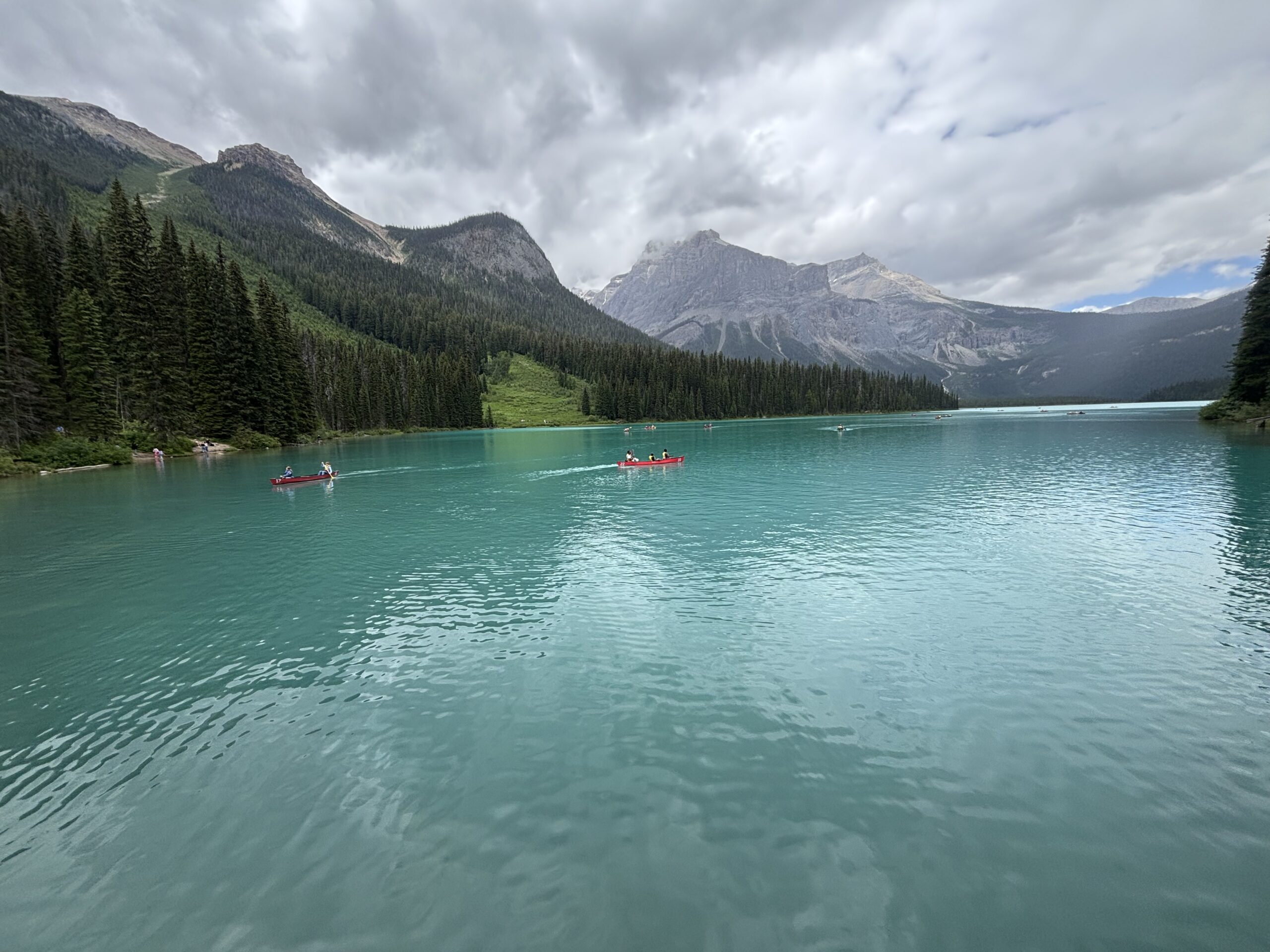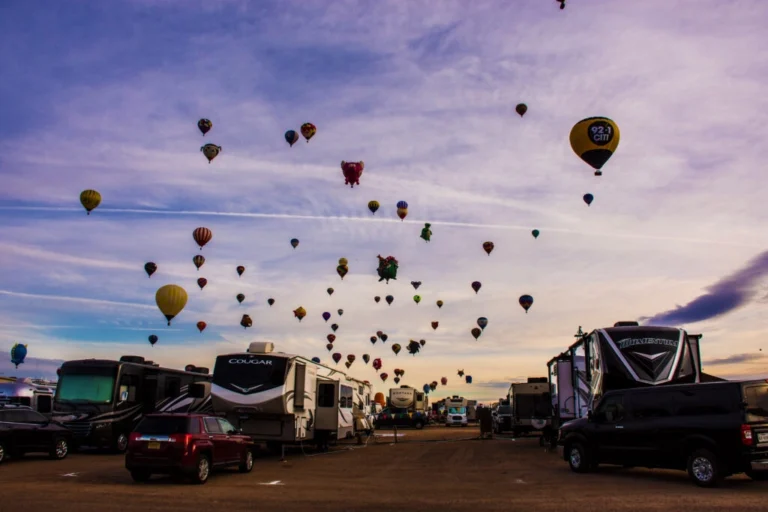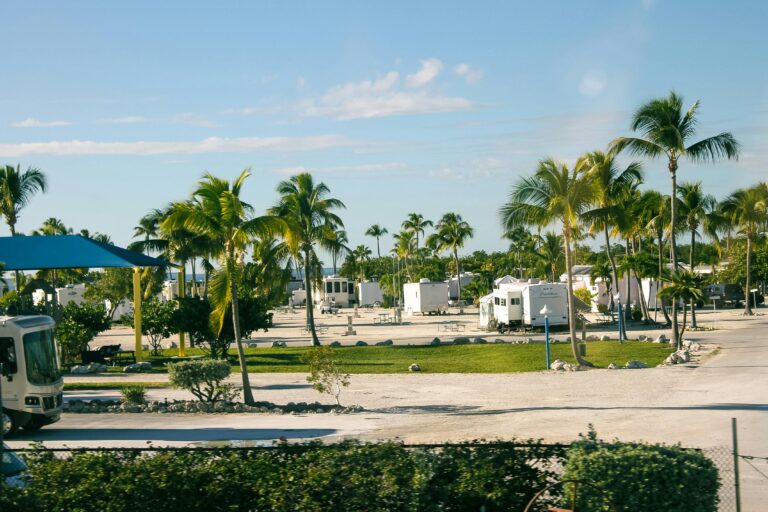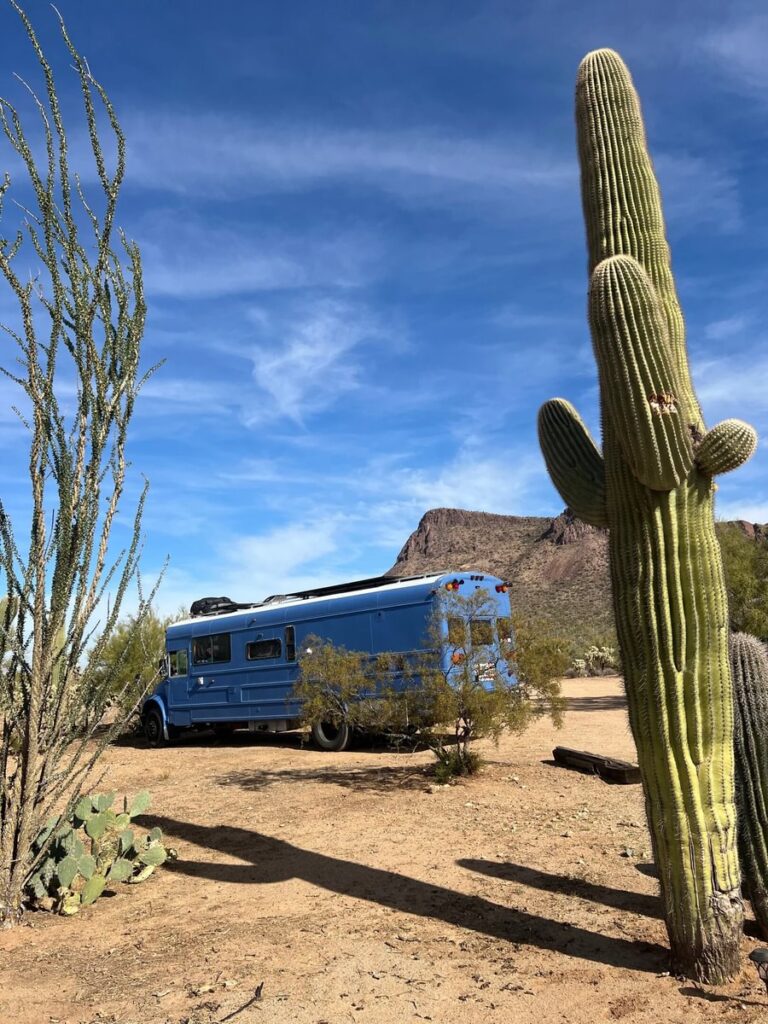Three Weeks to Banff: Family RV Adventure
Why Choose an RV Road Trip?
Embarking on an RV road trip with family opens doors to freedom and flexibility that traditional vacations simply can’t offer. Traveling by RV means:
- Having your full “home” on wheels: Your beds, kitchen, bathrooms, and living space all move with you.
- No packing and unpacking every night, which is a blessing for families with kids.
- The ability to wake up near breathtaking views -lakes, mountains, forests -with both spontaneity and comfort.
- Spending precious time together without screens or distractions while bonding over campfires, hikes, and shared meals.
From our research and firsthand experience with multiple families, a Class C RV rental around 23-25 feet is the sweet spot. It’s roomy enough for kids and parents to have their own spaces but still manageable on winding mountain roads. Most families enjoy the convenience of slide-outs that widen the interiors when parked. Rental rates average about $215 per night during summer peak, but early reservations on trusted sites such as Cruise America or Outdoorsy usually secure the best fleet and prices.
Choosing the Ideal RV
Before your trip, carefully consider these factors:
- Sleeping arrangements: For two adults and two kids, look for bunk beds and a master bed. Some RVs also offer convertible dinettes or sofas.
- Storage: Pack light but smart-extra space for outdoor gear, toys, and food supplies is essential.
- Driving comfort: If multiple family members will share driving duties, choose a model with good visibility and easy handling.
- Functional kitchen: Cooking most meals in the RV saves money and keeps picky eaters happy.
- Tech and safety: WiFi boosters, backup cameras, and GPS can make your travels smoother.
An Optimized 21-Day Family Itinerary
This itinerary balances travel days, attractions, and relaxation, ensuring small legs don’t get over-tired and that everyone gets enough down-time.
Days 1-2: Seattle to Vancouver
Begin by picking up your RV in Seattle (a major rental hub with lots of options). Stock up on groceries at Costco or Walmart before crossing into Canada (don’t forget passports!). For your first stop, Burnaby Cariboo RV Park is ideal, offering laundry, WiFi, a playground, and swimming pools-perfect for the kids to unwind after travel.
Tips: Visit Vancouver’s Science World or the Aquarium for educational fun before fully heading into the wilderness.
Days 3-4: Whistler
The drive north along the Sea-to-Sky Highway offers incredible views and family photo ops. Spend two nights at Whistler RV Park or Riverside Resort, which provide sitting areas around campfires, playgrounds, and bike rentals.
Must-dos: Take the gondola up Whistler Mountain and enjoy kid-friendly nature walks like Lost Lake or the Valley Trail. Stop at the Family Adventure Zone for mini-golf and bungee trampolines.
Days 5-6: Wells Gray Provincial Park
Wells Gray is a hidden gem famed for its waterfalls and friendly wildlife. Dutch Lake Resort’s waterfront RV sites have full hookups and a calm atmosphere. Take the kids on kid-accessible hikes to Helmcken and Spahat Falls. The lake also offers swimming and canoe rentals; a perfect early morning or late afternoon activity.
Pro tip: Bring bear spray and adhere to safety guidelines—in our experience, wildlife encounters are exciting but require care.
Days 7-10: Jasper National Park
Arrive in Jasper for an epic experience amidst rich forests and crystal-clear lakes. Stay at Wapiti Campground with easy access to town and nature. During your days here, the family can explore:
- Maligne Lake, including the scenic boat tour to Spirit Island.
- Easy trails at Valley of Five Lakes -perfect for kids who love frogs.
- Canoeing at Pyramid Lake or swimming at Patricia Lake.
- Jasper SkyTram offers panoramic mountain views.
Evenings mean campfire dinners with stories, and if you’re lucky, spotting elk or deer near your campsite.
Days 11-12: Icefields Parkway
This drive is considered one of the most spectacular in the world. Take two days to stop by:
- Athabasca Glacier, where families can join guided or snow coach tours (kids love the novelty of walking on ice).
- Sunwapta and Athabasca Falls (both have easy walkways).
- Sites like Bow Lake and Peyto Lake for short photo hikes.
The Columbia Icefield RV Park is a perfect overnight stop, with stunning glacier views and modern facilities.
Days 13-14: Lake Louise and Moraine Lake
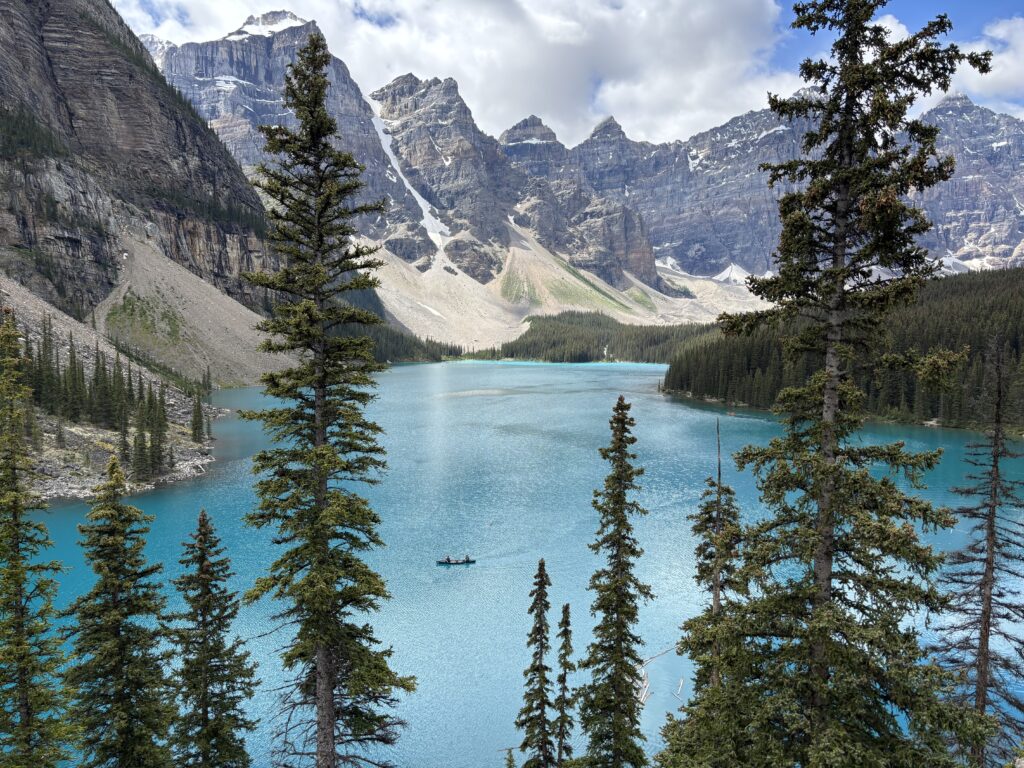
While both lakes are heavily visited, their beauty justifies the crowds. Book your campsite at Lake Louise and rely on shuttle services for access-private vehicles aren’t allowed parking at Moraine Lake during high season.
Enjoy:
- Canoe rentals on the serene lake waters.
- Short, gentle lakeside strolls with the kids.
- Picnics with expansive mountain vistas.
Safety tip: Keep bear spray and always stay on trails. Visit the Lake Louise visitor center for ranger programs designed for kids.
Days 15-16: Banff National Park
Choose campgrounds like Tunnel Mountain Village II or Two Jack Lakeside Campground for family-friendly layouts, playgrounds, and proximity to town.
Activities include:
- Relaxing at Banff Upper Hot Springs (a huge hit with children).
- Exploring Banff town’s shops and restaurants.
- Hiking the gentle Tunnel Mountain Trail-a manageable 3.8 km loop with rewarding views.
- Taking a scenic drive down the Bow Valley Parkway, famous for wildlife sightings.

Days 17-18: Yoho National Park
Set just west of Banff, Yoho offers additional natural wonders while being less crowded. The Kicking Horse Campground provides quiet forested pads. Emerald Lake is the centerpiece, ideal for canoeing, easy lakeside walks, or picnics.
Tip: Drive to Takakkaw Falls, one of Canada’s highest waterfalls, and take the short trail to its base.
Days 19-20: Okanagan Valley (Kelowna region)
The Okanagan offers a warm, relaxed environment with beaches, orchards, and plenty for kids to enjoy. Bear Creek Provincial Park campground features lakeside camping with good amenities.
Families love fruit picking at local farms, swimming at sandy beaches, and enjoying fresh local produce. Take advantage of bike paths and visit some of the numerous orchards for seasonal fruits and farm-to-table experiences.
Day 21: Return to Vancouver
Wrap up your adventure by returning to Vancouver for RV drop-off. Use your last day to visit a local park, treat the kids to a farewell ice cream, or visit attractions you missed on your first stop.
Campground Selection: A Family-Centric Approach
Choosing the right campground can make or break a family trip. Our selection process focused on:
- Child safety: Fenced campsites or well-defined boundaries to keep kids secure.
- Comfort: Clean restrooms, showers, and laundry facilities.
- Convenience: Proximity to grocery stores and medical help.
- Recreational facilities: Playgrounds, bike trails, swimming spots, and interpretive programs.
- Space: Sites large enough for kids to run and explore safely.
We recommend a mix of national/provincial parks and private RV resorts to balance budget and amenities. Avoid VERY crowded sites during peak season unless early reservations are secured.
Our experience emphasizes that private campgrounds often offer WiFi and pools—not essentials, but excellent for rainy days or extra fun.
Recommended Family-Friendly Campgrounds
Choosing the right campground can define your family’s experience. Campgrounds vary widely in amenities, location, size, and atmosphere. Here are our top picks along the route, focusing on family-friendly features, safety, convenience, and access to local attractions.
Seattle to Vancouver Area
Campground: Burnaby Cariboo RV Park (Burnaby, BC)
Why Choose It: This campground stands out for its balance of urban convenience and family-oriented facilities. It offers clean, well-maintained sites with electric and water hookups, laundry facilities, a playground, and swimming pools-perfect for children to burn off energy after a day of travel. Its proximity to Vancouver provides easy access for city excursions to sights like Science World or Stanley Park without losing the comfort of the campground environment.
Whistler
Campgrounds: Whistler RV Park or Riverside Resort
Why Choose Them: Both campgrounds are near Whistler’s village, allowing families to enjoy urban amenities alongside outdoor adventures. These parks include playgrounds, group fire pits, clean restrooms, and bike rentals. Their location on bike paths and close to hiking trails offers easy access for family-friendly walks and activities such as mini-golf or gondola rides, allowing kids to explore safely while adults enjoy spectacular mountain scenery.
Wells Gray Provincial Park
Campground: Dutch Lake Resort & RV Park
Why Choose It: Positioned seaside on Dutch Lake, the RV sites offer direct access to water for swimming and canoeing-a huge plus for families. The sites have full hookups, fire pits, and are shaded, providing comfort and a close-to-nature feel. It’s an excellent base for day hikes to nearby waterfalls like Helmcken Falls, and the campground’s laid-back, safe setting is ideal for families with young children. The chance for wildlife sightings not far from your RV adds an exciting touch to the stay.
Jasper National Park
Campgrounds: Wapiti Campground and Whistlers Campground
Why Choose Them: These campgrounds lie close to Jasper town, providing a great blend of wilderness and convenience. Wapiti offers forested sites with shade, fire pits, and nearby restrooms, which is great for families wanting a semi-remote feel without sacrificing comfort. Whistlers Campground is larger and provides additional amenities such as potable water, flush toilets, and access to Jasper town via shuttle. Being near town means easy runs for supplies, dining, and activities like the Jasper SkyTram or Maligne Lake tours.
Icefields Parkway
Campground: Columbia Icefield Campground
Why Choose It: Positioned within proximity to Athabasca Glacier, this campground is the gateway for glacier tours and incredible mountain scenery. The campground’s spacious sites accommodate larger RVs with full hookups and modern amenities, perfect after a long day of sightseeing. Being right on the Icefields Parkway means easy access to multiple trailheads and picnic spots, maximizing family adventure time with minimal driving.
Lake Louise and Moraine Lake
Campgrounds: Lake Louise Campground and Mosquito Creek Campground (for Moraine Lake access)
Why Choose Them: Lake Louise Campground is fully equipped for family campers, with electric hookups, clean restrooms, and fenced areas for bear safety. It offers shuttle access to Lake Louise and Moraine Lake, essential because private vehicles are restricted in peak seasons. Mosquito Creek near Moraine Lake provides primitive camping that appeals to families looking to explore less crowded pathways. Both campgrounds put families within minutes of some of the most iconic, family-friendly hiking and canoeing experiences in the Canadian Rockies.
Banff National Park
Campgrounds: Tunnel Mountain Village II and Two Jack Lakeside Campground
Why Choose Them: Tunnel Mountain Village II is popular for families because of sizeable, level sites and playgrounds. It is close enough to Banff town for quick access to shops and restaurants yet secluded enough for serene evenings. Two Jack Lakeside has beautiful lakeside spots ideal for evening walks and swimming. Both campgrounds provide modern amenities including flush toilets, showers, and potable water, offering comfort without losing the campground experience. Family activities such as hiking, hot springs, and cultural sites are easily accessible from these locations.
Yoho National Park
Campground: Kicking Horse Campground
Why Choose It: This quieter campground nestled in a forested area offers large shaded sites, making it appealing to families wanting peace after busy days. It’s a short drive to Emerald Lake, where canoe rentals and gentle strolling trails abound. The campground’s proximity to natural attractions like Takakkaw Falls also makes it convenient to explore the park’s highlights with children, balancing tranquility with adventure.
Okanagan Valley (Kelowna Region)
Campground: Bear Creek Provincial Park
Why Choose It: Located on Okanagan Lake, Bear Creek offers excellent lakeside camping, with wide, shaded sites and family-friendly facilities like washrooms, showers, and nearby boat launches. It is ideal for families wanting to relax with swimming, kayaking, or picnicking. The campground’s close proximity to Kelowna city means convenient access to grocery stores, kid-friendly attractions, and fruit farms for fresh, local produce.
Final Thoughts on Campground Selection
When traveling with family, the campground acts as your home base after active days outdoors. Prioritize sites that combine safety, accessibility, and amenities without sacrificing immersion in nature. Child-centric features like playgrounds, pools, and safe swimming areas can enormously increase enjoyment, while proximity to town and key attractions reduces stress for parents.
Making advance reservations-often six months before travel during summer months-is crucial to securing these preferred campgrounds. Many popular parks operate on a first-come, first-served basis for some sites, but families will benefit significantly from booking ahead to guarantee spots in the best locations tailored to their needs.
What to Expect Day-to-Day
Living on the road requires daily rhythms:
- Morning: Prepare breakfast in the RV, plan the day, and pack snacks and lunches.
- Daytime: Go for hikes or boat rides, explore visitor centers, participate in ranger-led programs, or visit town sites.
- Afternoon/early evening: Return for downtime, swim, or free play.
- Night: Cook dinner, share stories around the campfire, stargaze, and prep for the next day.
Food and Groceries
Walmart and Costco trips in big cities are the best way to stock up inexpensively. Bring kid favorites plus healthy snacks for hikes and drives. Cooking in the RV’s kitchen saves money and keeps mealtime stress low. Don’t forget marshmallows, chocolate, and graham crackers for traditional s’mores nights.
Entertainment and Education for Kids
Long drives and campsite downtime call for a mix of activities:
- Nature journaling and sketching
- Audiobooks and podcasts focused on nature or adventure
- Card games or travel versions of board games
- Educational books about plants, animals, and geography
- Photography with kids’ own cameras or smartphones
Encourage kids as active participants in meal prep, map reading, and campsite setup.
Safety and Preparation
- Always carry bear spray where required, and know how to use it.
- Pack layered clothing and prepare for sudden weather changes.
- Keep a well-stocked first aid kit, especially with kid-specific supplies.
- Have detailed maps, GPS, and up-to-date weather apps.
- Learn basic RV maintenance like checking tire pressure and using dump stations.
Family RV Trip Budget Summary
| Expense Category | Estimated Cost (USD) |
|---|---|
| RV Rental (21 days) | $4,515 |
| Campsite Fees | $1,150 |
| Fuel | $825–$1,050 |
| Food & Groceries | $750 |
| Activities & Tours | $450 |
| Insurance | $450 (if separate) |
| Miscellaneous | $200 |
| Total | $7,540–$8,365 |
Spending is manageable with proper planning. Many free or low-cost activities (hikes, lakes) balance out paid tours like glacier snow coach trips or boat rides.
Final Thoughts
A 3-week family RV trip from the USA to Banff is a transformative journey full of authentic American and Canadian wilderness, opportunity for close family connections, and moments of awe that can’t be replicated in any other vacation format. Every mile driven builds adventure, every campsite shared forms stories, and every lake visited marks a milestone in your family’s unfolding travel legacy.
If planners take the time to select the right RV, campgrounds, and pace, this trip becomes a seamless, rejuvenating, and breathtaking exploration for all ages.

